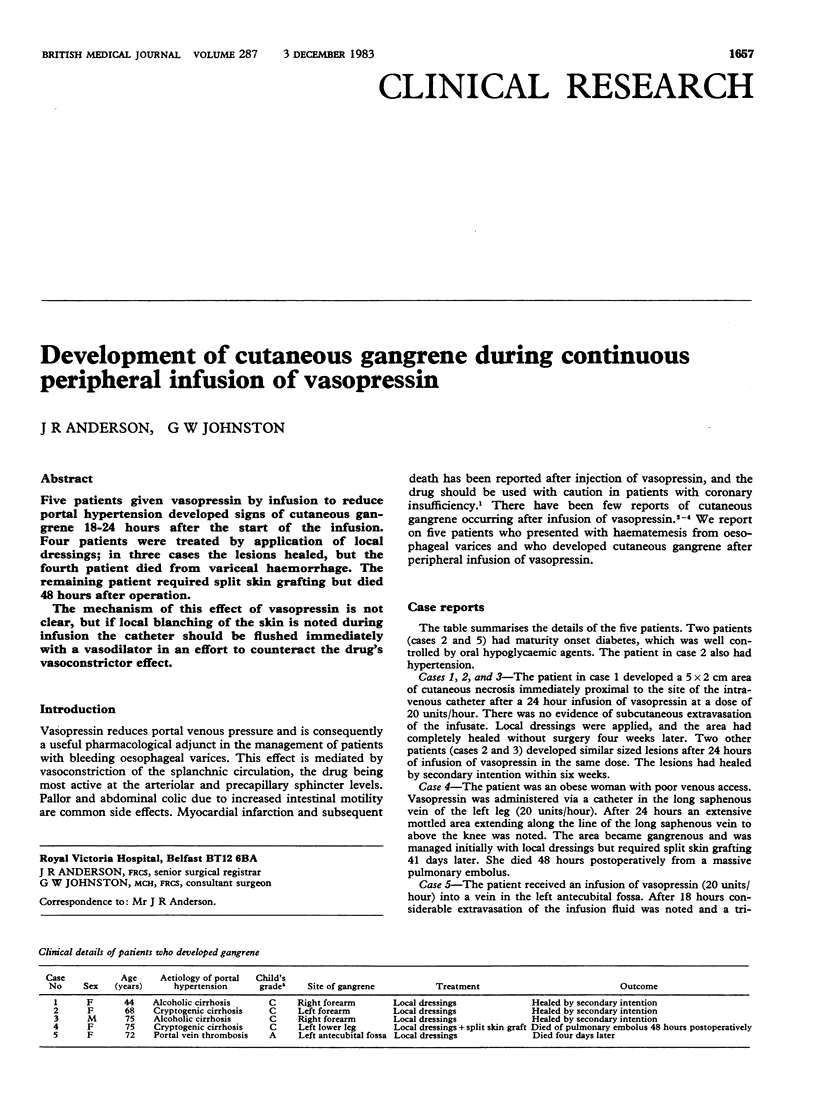Abstract
Five patients given vasopressin by infusion to reduce portal hypertension developed signs of cutaneous gangrene 18-24 hours after the start of the infusion. Four patients were treated by application of local dressings; in three cases the lesions healed, but the fourth patient died from variceal haemorrhage. The remaining patient required split skin grafting but died 48 hours after operation. The mechanism of this effect of vasopressin is not clear, but if local blanching of the skin is noted during infusion the catheter should be flushed immediately with a vasodilator in an effort to counteract the drug's vasoconstrictor effect.
Full text
PDF

Selected References
These references are in PubMed. This may not be the complete list of references from this article.
- Greenwald R. A., Rheingold O. J., Chiprut R. O., Rogers A. I. Local gangrene: a complication of peripheral Pitressin therapy for bleeding esophageal varices. Gastroenterology. 1978 Apr;74(4):744–746. [PubMed] [Google Scholar]
- Mogan G. R., Wormser G. P., Gottfried E. B. Infected gangrene. A serious complication of peripheral vasopressin administration. Am J Gastroenterol. 1980 May;73(5):426–429. [PubMed] [Google Scholar]
- Wormser G. P., Kornblee L. V., Gottfried E. B. Cutaneous necrosis following peripheral intravenous vasopressin therapy. Cutis. 1982 Mar;29(3):249–252. [PubMed] [Google Scholar]


